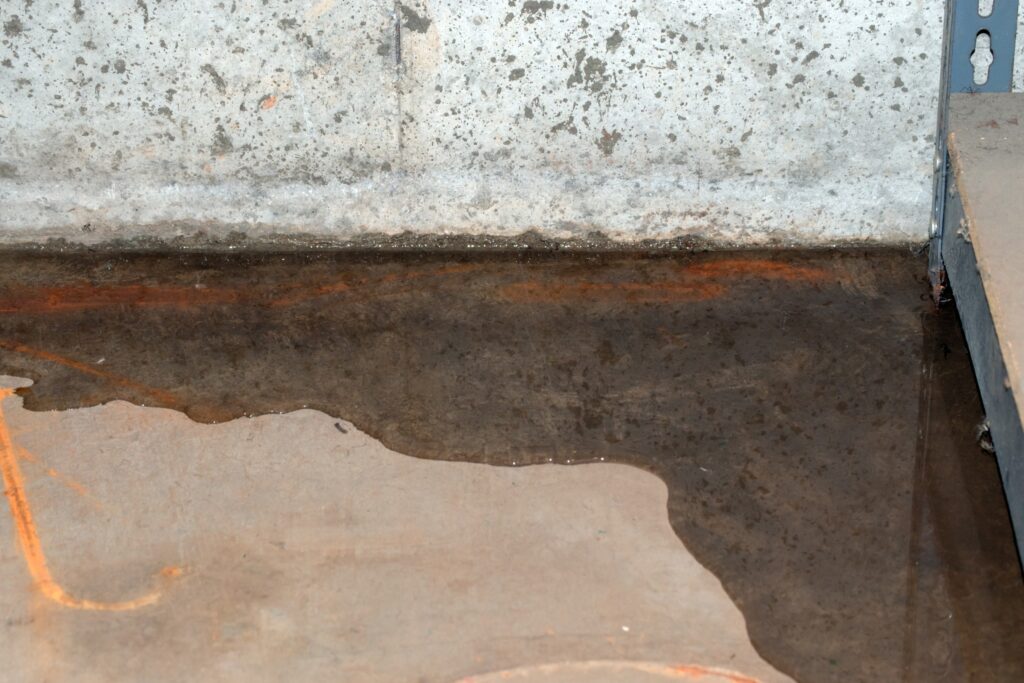Although builders can take all the necessary measures to waterproof your basement during construction, the house can settle over time causing cracks in the basement walls. The water eventually seeps through these cracks when the soil outside becomes saturated. In this situation, you need to find the source of the leak and waterproof your basement walls to prevent leakages in the future. It is important to follow all the necessary steps to ensure your basement is structurally sound and resistant to water leakages. In today’s article, we will be sharing with you a few tips on what not to do when waterproofing your basement.
Don’t waterproof when the basement is still wet
Never make any repairs when you have standing water or the basement walls are still wet. Before repairing a crack, it is important to get rid of all the water so you can work in a safe environment. A flooding basement poses the risk of electrical shock and other objects that could cause accidents because they are hidden underwater. Allow some time for the basement to dry before you begin waterproofing. You may need to replace certain aspects of your ceiling, walls, and flooring before you waterproof your basement. Keep in mind that water can weaken and damage certain foundations so the area needs to be inspected when dry to avoid a collapse later.

When waterproofing your basement, follow these tips
- Don’t forget to check the soil around the foundation
Checking the soil around your home’s foundation allows you to know whether water sipping through your basement walls could be coming from outside. To get rid of this problem from the outside, you need to ensure that the surrounding soil slopes away from the house and not towards it. Also, direct the drainage pipes from the gutters to push water away from the foundation. Another important step you can take to prevent water leakages from outside is to fill in depressions around the foundation. This prevents water from sinking deep under the soil and into the basement.
- Don’t waterproof with waterproofing paint only
It is crucial to follow the right steps when waterproofing your basement to ensure you don’t have a recurring problem in the future. Relying solely on waterproofing paint because of the qualities highlighted by the manufacturer is far from the only item you should be using. It is a quick fix that doesn’t last for a long time because lime can develop on the walls, leading to the bubbling and cracking of the paint. Over time, the paint will flake off and your initial leakage problem will start over again. The best way to avoid needless repairs is to pay more attention to potential solutions that address the root cause of the issue before finalizing with waterproofing paint.
- Don’t ignore potential runoff locations
Try to check your home’s exterior for areas where runoff could be occurring if you have spots in your basement with constant waterlogs. Extra runoff usually originates from the roof mainly as a result of an improper gutter system. This causes water to seep off the roof, flow down the exterior wall, and accumulate around the foundation. The solution to this problem will be to repair your gutters and ensure your water drainage system extends far away from your home’s foundation. This will prevent water from pooling around your home, and into your basement walls.
- Don’t apply a waterproofing sealer over painted walls
It is a good idea to remove all paint from your basement walls before you apply a sealer. The main reason for this is waterproofing sealers only adhere well to bare masonry. Also, getting rid of paint from the walls allows you to check for any wet areas around the basement walls before you start waterproofing. Basement walls that have several coats of paint may require blasting contractors to remove them before any sealing work can begin. You can also get rid of efflorescence using muriatic acid as it could prevent the sealer from adhering properly to the masonry. Besides waterproofing the basement walls, don’t forget to address the window wells as it could cause a leakage problem.
Waterproofing a basement requires a bit of patience and professional experience to avoid recurring problems. If you have tried waterproofing your basement walls before but still don’t see a change, it would be a good idea to call in waterproofing experts. Not only do they help mitigate the issue in an efficient and timely manner but also give professional advice on how to prevent the problem from happening in the future.



